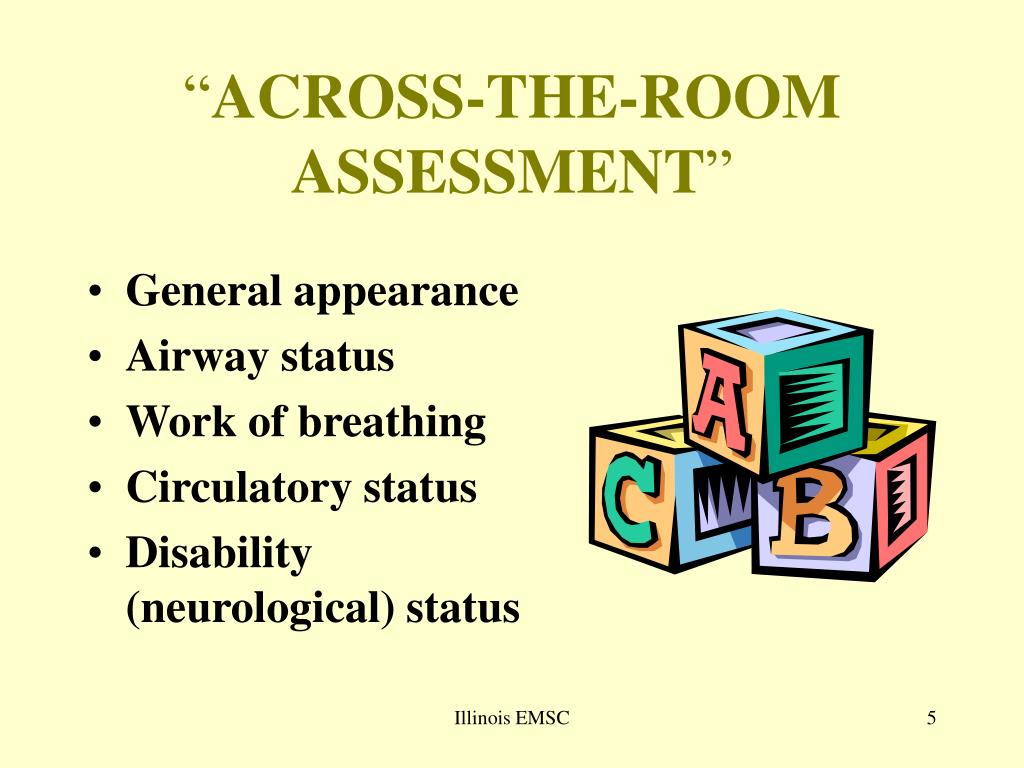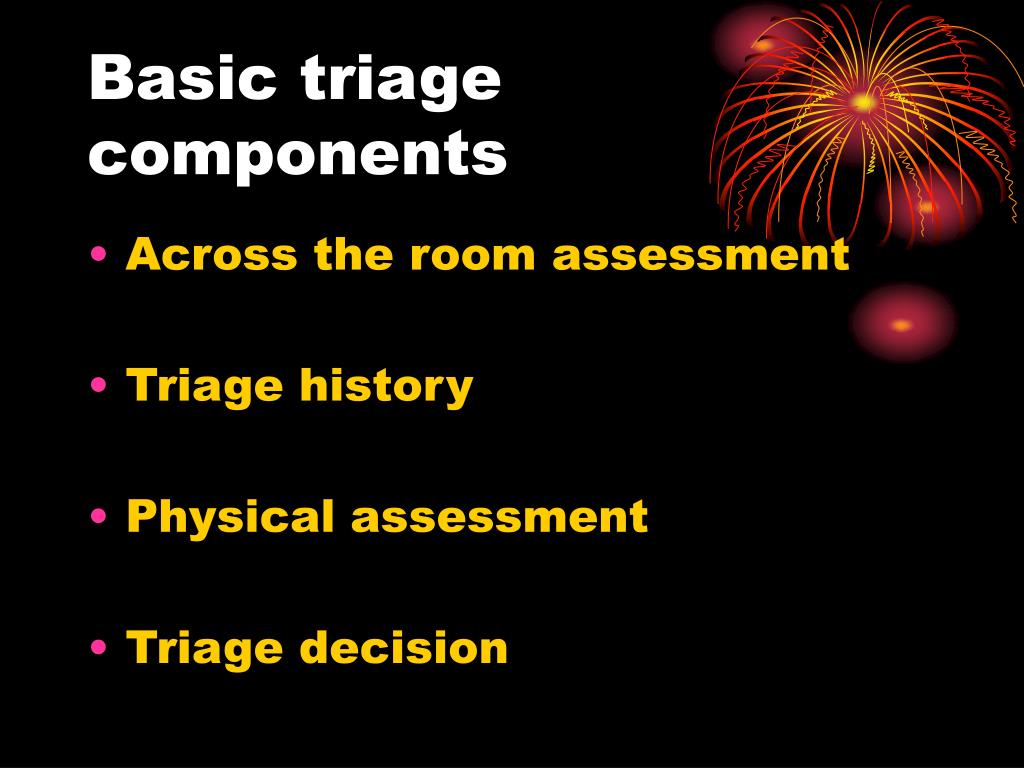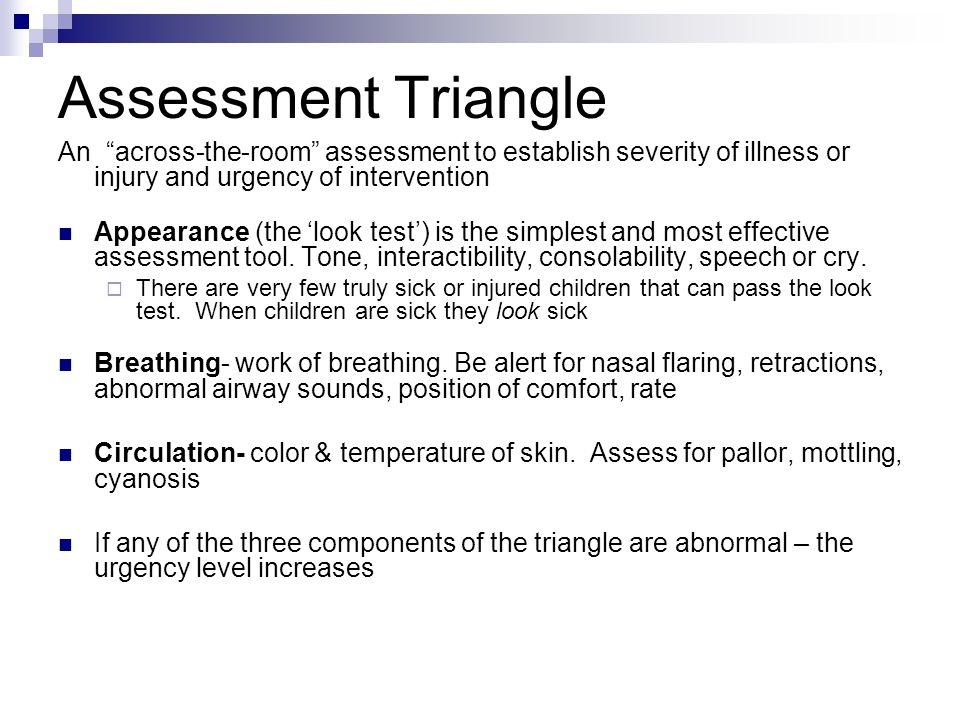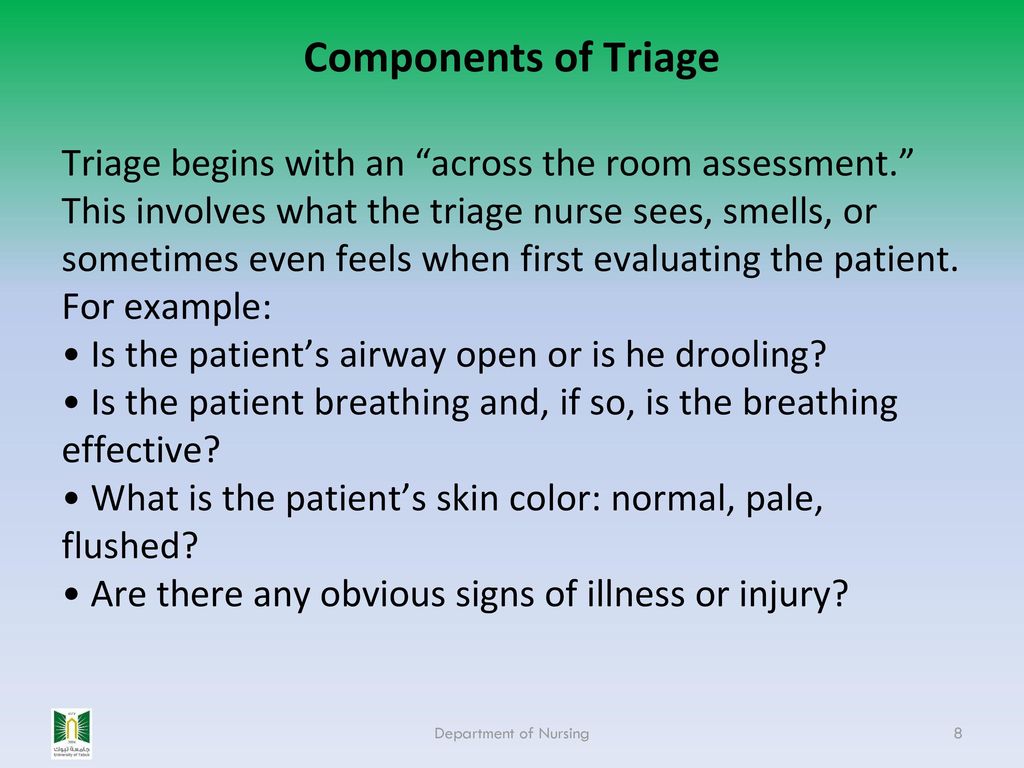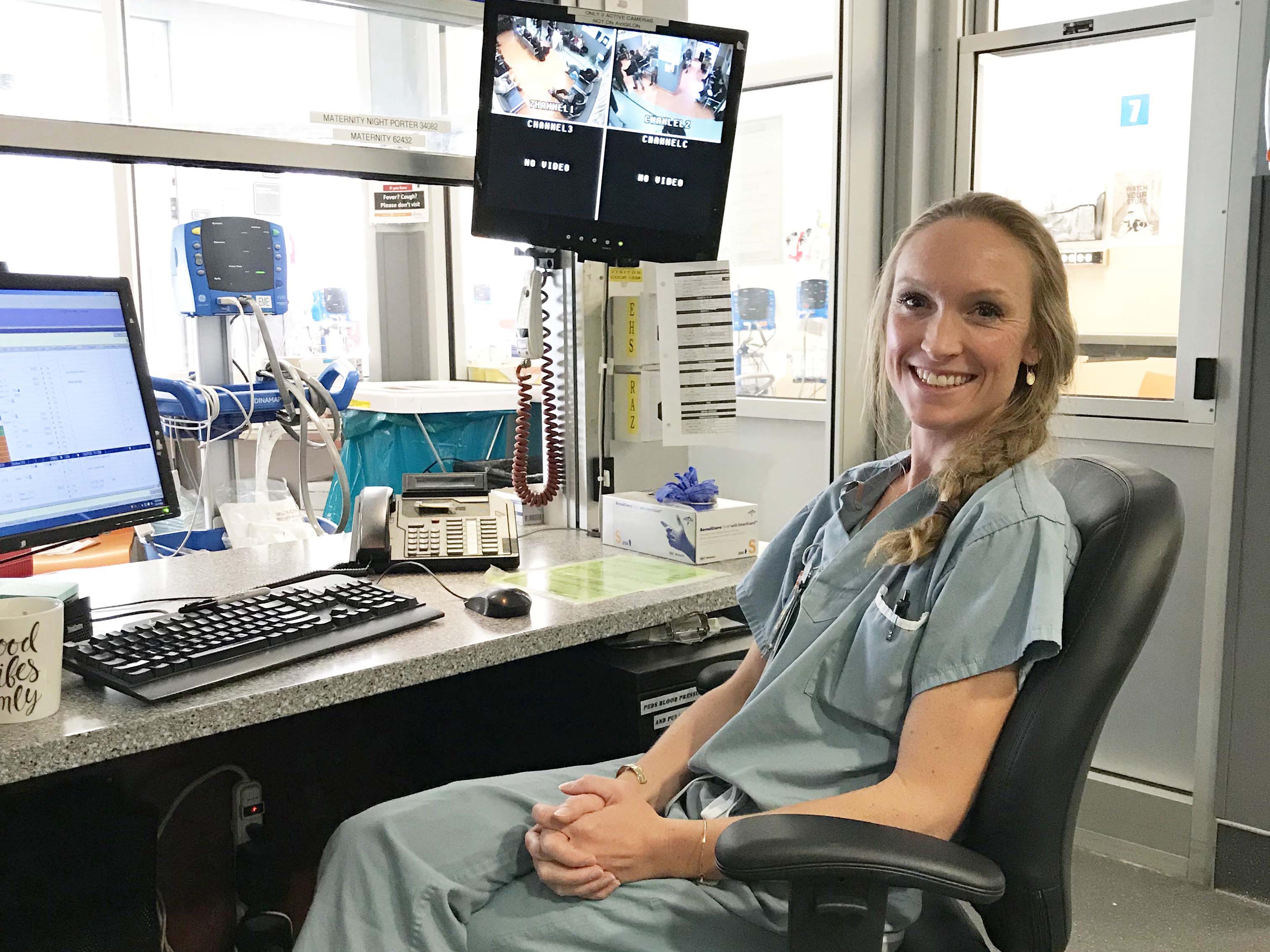A quick visual assessment from across the room will indicate to the triage nurse if someone needs to be bumped to the front of the triage line or rushed to the trauma room for immediate treatment.
Across the room assessment triage.
At anytime during triage if child determined to have an emergent condition triage should be stopped and treatment initiated nursing protocols may be initiated acuity level may change throughout the patient s stay in the emergency department re assessment when patient s in waiting room for 30minutes post triage level 1 red.
This finding may be a sign of which condition.
A great deal of information can be gathered by visualizing the patient as he or she steps into the waiting room wr.
A rapid triage assessment begins with an across the room survey.
Answer simple questions such as those related to fever control.
Sight and hearing c.
The triage nurse notes a fruity smell during an across the room assessment.
Observational assessment also known as the across the room look the observational assessment is crucial to determining any necessary initial medical treatment.
Upon check in the triage nurse makes this assessment based on observation 1 this is a verified and trusted source.
Triage is an information collecting and decision making process.
When performing an across the room assessment the triage nurse uses which senses.
Sight and touch b.
Visualizing the patient s appearance as he or she enters the facility is the beginning of the rapid triage assessment.
Touch and taste d.
What should the nurse do when a person calls on the telephone for medical advice.
Order of triage should not be restricted to order of arrival but should be based on across the room assessment of patients waiting to be triaged1.





